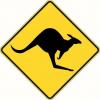I do not understand the recommendations for block planes.
The low angle block plane is great for working end grain. It leaves a better surface than a bench plane. A lot of my early shooting board work was done with a block plane.
For breaking an edge any plane can do the job. A block plane is a bit easier to handle. Though honestly most of my corner breaking is now done with a small hollow plane. (We should let the OP get used to a few other planes before sending him down the path of acquiring a set of hollows & rounds.)
If you want to round a corner on a piece, a block plane with an adjustable mouth is possibly the best tool to use.
A slight edge misalignment on a glued up panel? Again, block plane to the rescue.
With an electric planer and jointer, a #5 might be the do all plane for the heavy work. A block plane is a good choice for the light work.
jtk
"A pessimist sees the difficulty in every opportunity; an optimist sees the opportunity in every difficulty."
- Sir Winston Churchill (1874-1965)






 Reply With Quote
Reply With Quote




